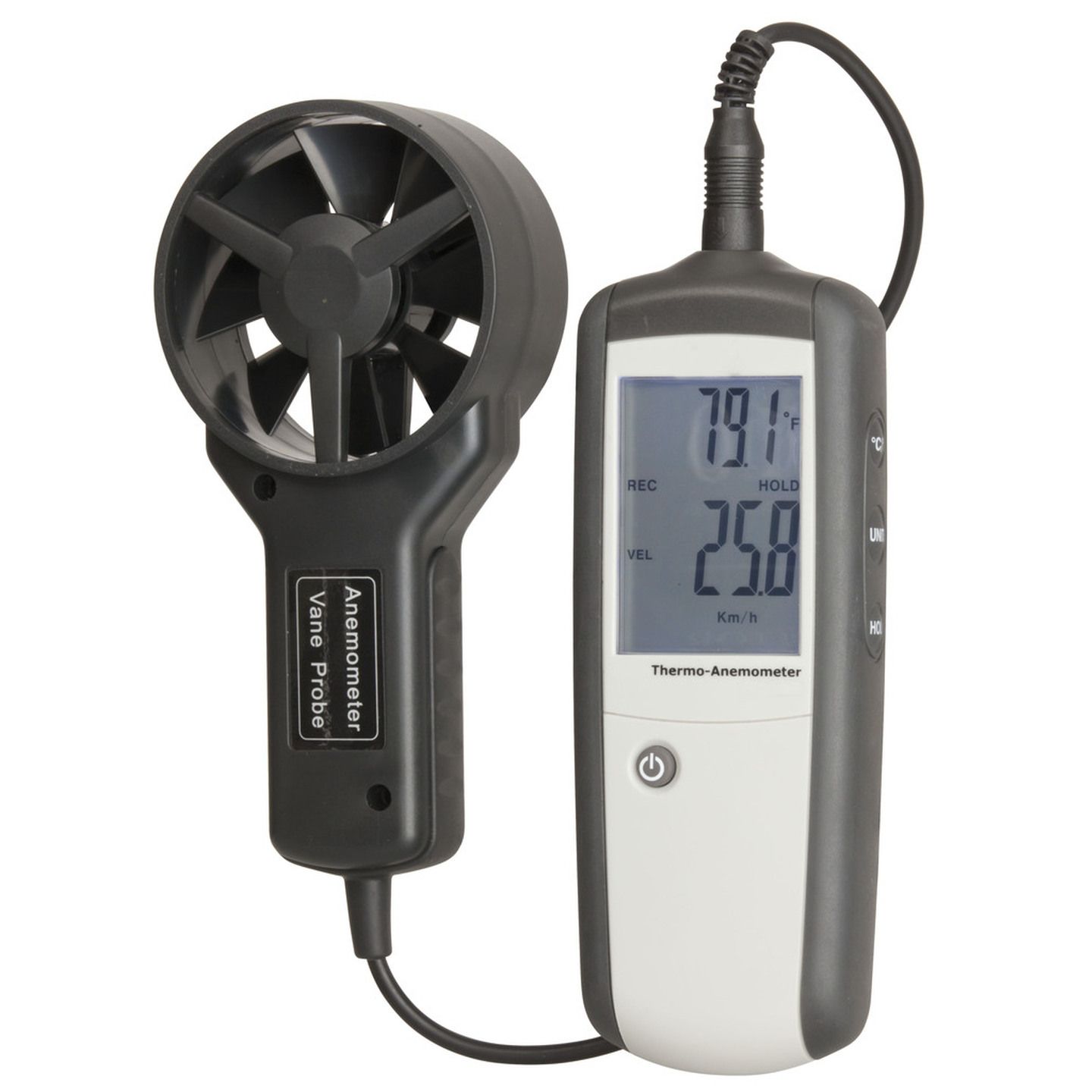All You Need to Understand About Anemometers: Exactly How They Function, Why They Matter, and Where to Use Them
Anemometers, though usually ignored in the realm of scientific instruments, play a vital function in numerous areas, supplying valuable insights into wind speed and air flow patterns. As we dig into the ins and outs of anemometer modern technology, we will certainly uncover the inner workings of these devices, their importance, and the crucial considerations when choosing the ideal anemometer for certain applications.

Anemometer Essentials
A necessary instrument made use of to gauge wind rate and direction, the anemometer plays a vital function in meteorology and various sectors. An anemometer commonly contains 3 or 4 mugs that turn in the wind, a vane that points right into the wind, and sensors to track the turnings or motions. By determining the turnings or activities over a certain period, the anemometer can identify wind rate. The vane assists identify wind instructions by directing right into the wind, giving useful data for weather condition forecasting, aeronautics, maritime operations, environmental tracking, and wind energy applications.
There are numerous types of anemometers available, consisting of mug anemometers, vane anemometers, hot-wire anemometers, and sonic anemometers, each with its unique functions and applications. Mug anemometers are generally used for fundamental wind rate dimensions, while vane anemometers are preferred for directional measurements.
Principles of Anemometer Operation
Building on the fundamental understanding of anemometer fundamentals, the principles of anemometer procedure illuminate the auto mechanics behind wind rate and instructions measurements. Mug anemometers, for circumstances, have three or even more cups that record the wind, triggering them to spin much faster as the wind speed rises. Hot-wire anemometers depend on a warmed cable that cools down as wind passes over it, with the rate of cooling down identifying the wind rate.
Value of Anemometers
Anemometers play an essential role in measuring wind speed and direction, providing essential data for weather projecting, environment researches, ecological tracking, and air travel operations. Meteorologists rely on anemometers to collect exact wind data, assisting them understand weather patterns, predict storms, and concern timely warnings to the public. Wind ranch drivers make use of anemometers to analyze wind conditions and maximize electrical energy production from wind generators.
Applications Across Different Industries
Applications of anemometers extend throughout varied markets, showcasing their convenience and energy past weather forecasting. In the renewable resource field, anemometers play a crucial duty in examining wind conditions for wind ranch placements, making certain ideal energy manufacturing. Industries like construction and mining utilize anemometers to keep an eye on wind speeds, important for safety and security procedures, specifically when functioning at elevations or in open-pit mines where strong winds can pose threats. Anemometers are also integral in the air travel sector, helping pilots in understanding airspeed and wind direction for secure take-offs and landings. The maritime field gain from anemometers for ship navigating, helping seafarers anticipate climate changes and change routes appropriately. In farming, anemometers help farmers in taking care of crop spraying by supplying real-time information on wind speed to prevent drift. In addition, anemometers discover applications in HVAC systems to enhance airflow and improve power efficiency in buildings. The diverse use cases of anemometers highlight their significance throughout different sectors, highlighting their essential function in improving operational security and effectiveness (anemometer).

Choosing the Right Anemometer for Your Requirements
For general functions, a cup anemometer is appropriate for measuring wind rate, while a vane anemometer supplies wind instructions data. Hot-wire anemometers are suitable for reduced airspeed dimensions, and ultrasonic anemometers provide high accuracy and durability.

Conclusion
In final thought, anemometers play an important function in measuring wind rate and direction across different sectors. Understanding the concepts of anemometer operation is crucial news for choosing the best tool for details requirements. From meteorology to air travel, anemometers are important tools for ensuring and collecting exact information safety in various applications. It is important to think about the relevance of anemometers in order to make enlightened decisions when choosing the most suitable device for measuring wind conditions.
There are various types of anemometers available, consisting of mug anemometers, vane anemometers, hot-wire anemometers, and sonic anemometers, each with its unique attributes and applications. Cup anemometers are commonly utilized for standard Look At This wind speed dimensions, while vane anemometers are chosen for directional dimensions. Hot-wire anemometers are appropriate for reduced airspeeds, and sonic anemometers are suitable for high-precision measurements in research study and commercial setups.Structure on the foundational understanding of anemometer essentials, the concepts of anemometer operation illuminate find the technicians behind wind rate and direction measurements. For general functions, a cup anemometer is appropriate for determining wind rate, while a vane anemometer gives wind instructions information.